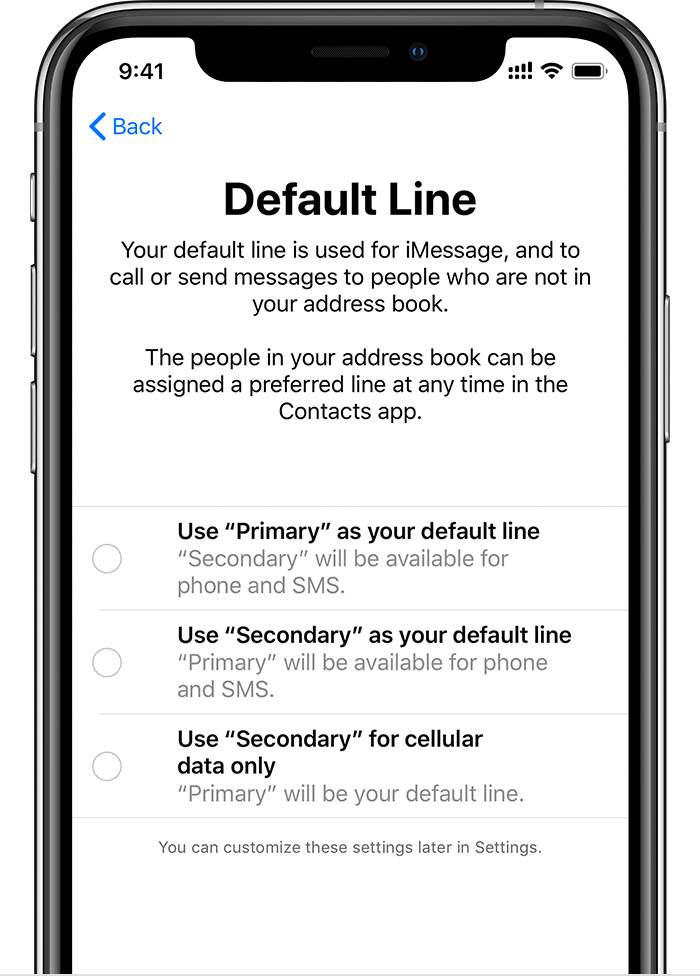New iPhones Getting Dual SIM with iOS 12.1: What You Need to Know
The iPhone XS, XS Max and XR are getting dual-SIM support. Here's how you can benefit and how to set it up.
When Apple unveiled its new iPhones at a press event in September, the company said that the handsets would come eSIM technology that would enable support dual-SIM capability. But the phones didn't ship with the feature.

Now, Apple says that Dual SIM support is coming today (Oct. 30) with iOS 12.1. And when you upgrade, you'll have the ability to attach two phone numbers to your iPhone and use them throughout the day without worry of your phones or Messages finding their way to the wrong people from the wrong phone.
But before you jump at the chance to use dual SIMs, keep in mind that not all carriers have signed on just yet. But as time goes on and Apple can ink deals with those companies, more carriers should offer the opportunity to use the eSIM feature.
So, if you're interested in trying out eSIMs on your new iPhone XR, iPhone XS, or iPhone XS Max, here's a brief rundown of what you can expect.
What is an eSIM?
An eSIM is the term used in the mobile industry to describe what amounts to a virtual SIM card for your phone. Instead of forcing you to install two SIM cards into your smartphone to run two numbers off it, you can keep your single SIM in the handset and use the eSIM for another number.
The e in the eSIM stands for electronic. And if it takes off as time goes on, there's a good chance that those electronic cards could replace the physical cards you often find in today's smartphones.
MORE: Fastest Wireless Network - We Tested 8 Carriers to Crown a Winner
Get instant access to breaking news, the hottest reviews, great deals and helpful tips.
How does eSIM compare to traditional dual SIM?
In terms of your user experience, there isn't anything there to write home about. Instead of a dual-SIM array in your phone, which allows you to install two SIM cards into the handset, the eSIM can replace a physical card. That translates to less trouble for you, since you won't need to juggle multiple SIM cards, but also means the eSIM can't be removed and physically brought to another device.
Still, most people believe eSIM is the wave of the future.
What are eSIM's benefits?
When you start using eSIM, you might find that it offers far more convenience than a traditional SIM card.
With an eSIM, you can simply boot up your phone, attach your number or numbers, and you'll be good to go. There's no more dealing with SIM cards with an eSIM, and if you're traveling and want to be able to take your phone from one network to another, eSIMs will make your life much simpler.
Most industry watchers believe eSIMs can be used effectively for laptops and tablets and will allow you to seamlessly connect to Wi-Fi and cellular networks from your devices.
MORE: iPhone XS vs iPhone XS Max vs iPhone XR
From a design perspective, eSIMs also allow product makers to eliminate SIM cards and trays, which could result in device designs that are both thinner and smaller.
Which iPhones support dual SIM?
In order to get it up and running, you'll first need an iPhone XS, iPhone XS Max, or iPhone XR that's running iOS 12.1. You'll also want to contact your carrier to find out if it supports eSIM.
If your carrier supports eSIM, you'll want to set up a new line and let them know you'll be attaching it to the eSIM on your iPhone. They should provide you with a QR code or another feature in their carrier app to help you set up your new number.
Note that if you want to have two numbers on two different carriers, you'll need to unlock your iPhone. Otherwise, your two numbers will need to be on the same carrier network.
How do I set it up?
Apple has a handy guide for quickly setting up your dual-SIM technology on the iPhone's eSIM. But here's a quick rundown of what you'll need to do:
After you talk to your carrier about setting up a new line, you'll likely be given a QR code. Go to your iPhone's Settings > Cellular and choose Add Cellular Plan. You'll then want to use your iPhone to scan the QR code that your carrier gave you.
MORE: Buying the iPhone XR? Here Are 5 Things You're Giving Up
Once the iPhone works its magic and sets up your plan, you'll need to assign it a label, like Primary, Secondary, Person, Business, or something else. That's designed to help you determine which number someone is calling or texting you on.
Next, Apple will ask you how you want your plans to work. You can use your Primary as your default line or choose Secondary as your default line. That means it'll be the first number to use when you place calls or send text messages. You can also choose to only use your Secondary line for cellular data.
It's set up. Now what?
Now it's time to tinker.
Once your eSIM is set up, you'll want to go through your Contacts to decide whether they should be able to contact you on your Primary or Secondary number. You'll also want to go into your Phone and Messages app to learn how to switch numbers when you want to initiate a call or message.
Once your settings are made for each contact, you'll have peace of mind that you'll only be able to contact those folks from specific numbers. You can also tweak those settings whenever you wish.
Don Reisinger is CEO and founder of D2 Tech Agency. A communications strategist, consultant, and copywriter, Don has also written for many leading technology and business publications including CNET, Fortune Magazine, The New York Times, Forbes, Computerworld, Digital Trends, TechCrunch and Slashgear. He has also written for Tom's Guide for many years, contributing hundreds of articles on everything from phones to games to streaming and smart home.
